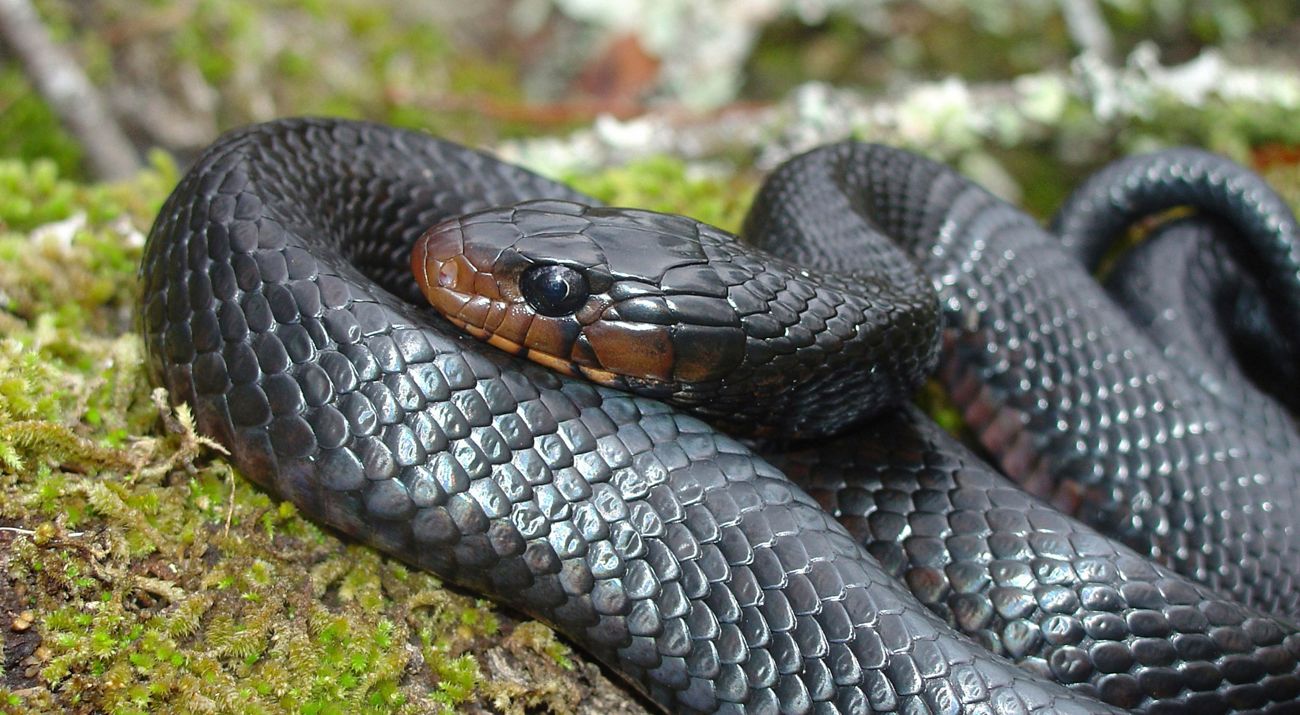The Nature Conservancy and Partners Release 41 Federally Threatened Eastern Indigo Snakes at North Florida Preserve
Collaborative efforts help return America's longest snake to its natural habitat.
Media Contacts
-
Carson Mitchell Pena
Phone: 352-318-2945
Email: carson.pena@tnc.org
Today, for the eighth consecutive year, The Nature Conservancy (TNC) in Florida and partners released 41 young eastern indigo snakes at TNC’s Apalachicola Bluffs and Ravines Preserve (ABRP). Through a collaborative program to return the native, non-venomous apex predator to the region, the multi-partner effort reintroduces the federally threatened snakes to ABRP’s restored sandhill habitats. The 41 snakes—20 female and 21 male—were raised for release. A total of 167 eastern indigo snakes have now been released at the property.
In 2023, the official species recovery program achieved a milestone of conservation success with the observation of two wild-born hatchlings discovered onsite—offspring of the previously released snakes.
ABRP is the only site in Florida currently designated for eastern indigo snake reintroduction. The preserve is a part of TNC’s Center for Conservation Initiatives, a core program that helps advance science; demonstrates best practices; and shapes conservation through education and training, outreach and volunteerism, science and research, innovation and land stewardship.
Quote: Michele Elmore
With increasing numbers of snakes released over time and successful reproduction, the indigo is gaining momentum to return to the landscape where it belongs.
“We continue our collective dedication to the species recovery effort for the eastern indigo snake as we embark on this eighth year of introductions at TNC’s Apalachicola Bluffs and Ravines Preserve,” said Catherine Ricketts, ABRP preserve manager with The Nature Conservancy in Florida. “Finding the two juvenile indigos onsite last fall is another significant indicator that the 40-plus years of habitat restoration and management work at ABRP is recreating a functional longleaf pine-wiregrass sandhill ecosystem that benefits imperiled species like the indigos.”
The 41 two-year-old snakes released at ABRP were bred and hatched by the Central Florida Zoo & Botanical Gardens’ Orianne Center for Indigo Conservation (OCIC), the world's foremost conservation organization dedicated to the captive propagation and reintroduction of the eastern indigo snake. The snakes were then raised with help from the Welaka National Fish Hatchery for approximately two years before release.
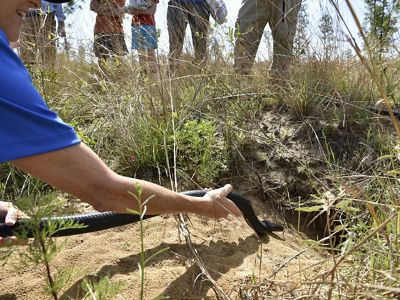
“As we complete our eighth annual indigo release at ABRP, joy—with a touch of pride—fills my being. It is wonderful to see these young indigos have the opportunity to fill their important role as a lynchpin species in the longleaf pine ecosystem,” said Dr. James E Bogan Jr., director of Central Florida Zoo's Orianne Center for Indigo Conservation. “With the recent news of the indigo hatchling discovery at ABRP, we can see that our combined efforts are paving the way toward the ultimate goal of a self-sustaining wild indigo population.”
In the past year, numerous eastern indigo snakes from previous releases have been observed at ABRP, including one female released in 2019 and 13 other individuals released between 2020 and 2023.
Along with traditional foot surveys to search for snakes at ABRP, OCIC’s Michelle Hoffman and team use trail cameras at the mouths of tortoise burrows and at intersections of drift fence arrays to detect eastern indigo snakes as they pass by. Trail cameras have taken thousands of photos of eastern indigo snakes in various locations. An automatic PIT (Passive Integrated Transponder) tag reader has detected individuals as they pass through one drift fence array intersection. Ten drift fence arrays were installed in October 2023, bringing the total to 17 drift fence arrays onsite, each equipped with a camera.
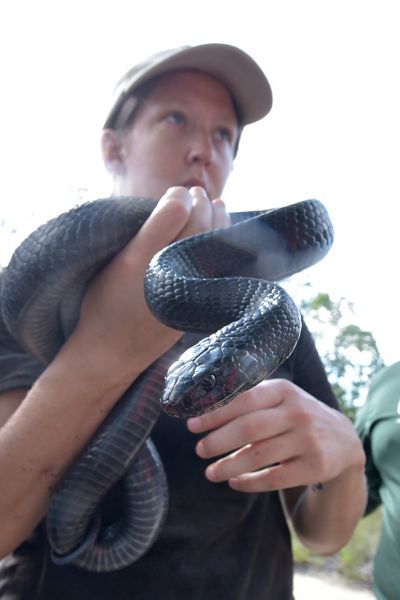
“It's exciting that the indigos are now successfully reproducing on their own,” said Michele Elmore, USFWS recovery biologist for the eastern indigo snake. “It's a testament to the talent, expertise and commitment by all the partners. With increasing numbers of snakes released over time and successful reproduction, the indigo is gaining momentum to return to the landscape where it belongs.”
Multiple nonprofits, government agencies and academic partners have worked together for decades in commitment to the recovery of eastern indigo snakes in North Florida including: The Nature Conservancy (TNC) in Florida, the Central Florida Zoo & Botanical Gardens’ Orianne Center for Indigo Conservation (OCIC), the Florida Fish and Wildlife Conservation Commission (FWC), U.S. Fish and Wildlife Service (USFWS), Welaka National Fish Hatchery, The Orianne Society, Joseph W. Jones Ecological Research Center, Southern Company through the National Fish and Wildlife Foundation (NFWF) and the Fish & Wildlife Foundation of Florida. Together, these partners have worked tirelessly to achieve these crucial conservation milestones.
“The future is very bright for indigo snakes at Apalachicola Bluffs and Ravines Preserve,” said Brad O’Hanlon, reptile and amphibian conservation coordinator for the Florida Fish and Wildlife Conservation Commission. “This project continues to be one of the gold standard conservation projects in Florida, and we are grateful for the many partnerships that contribute to our mission, values and shared goals.”
Eastern indigo snakes were historically found in southern Georgia, Alabama, eastern Mississippi and throughout Florida, though their range is now far more restricted. Largely eliminated from northern Florida due to habitat loss and fragmentation, eastern indigo snakes were last observed at ABRP in 1982, until the species recovery effort began in 2017 and our first hatchlings were discovered in 2023.
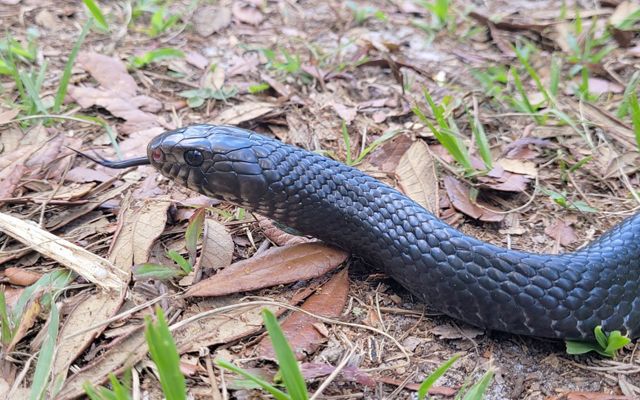
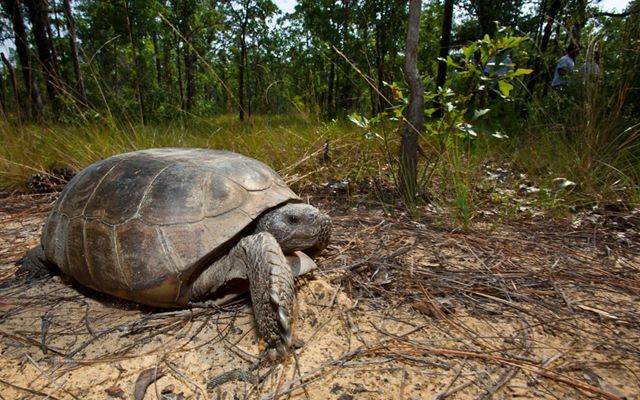
The eastern indigo snake (Drymarchon couperi) is the longest snake native to North America and an iconic and essential component of the now rare southern longleaf pine ecosystem. The species serves a critical function to balance the wildlife community by consuming a variety of small animals including both venomous and non-venomous snakes. Reaching lengths over eight feet long, eastern indigo snakes often rely on gopher tortoise burrows for shelter during cold weather.
The eastern indigo snake reintroduction efforts are supported by grants and other funding, including a Conserve Wildlife Tag Grant from the Fish & Wildlife Foundation of Florida, funded through the purchase of Conserve Wildlife Florida license plates and designated for conservation of non-game species and the habitats that support them. Additional funding to support the reintroduction has been provided by Southern Company through the National Fish and Wildlife Foundation.
About the Apalachicola Bluffs and Ravines Preserve (ABRP)
The 6,295-acre nature preserve in northern Florida’s Liberty County protects a large longleaf pine landscape carved by numerous seepage streams. It is home to the gopher tortoise and other longleaf pine specialist species. Located along the Apalachicola River, the preserve lies in the center of one of five biological hotspots in North America and is home to a great number of imperiled plants and animals. The preserve is a living laboratory for the development of restoration techniques and land management excellence.
The Nature Conservancy is a global conservation organization dedicated to conserving the lands and waters on which all life depends. Guided by science, we create innovative, on-the-ground solutions to our world’s toughest challenges so that nature and people can thrive together. We are tackling climate change, conserving lands, waters and oceans at an unprecedented scale, providing food and water sustainably and helping make cities more resilient. The Nature Conservancy is working to make a lasting difference around the world in 81 countries and territories (40 by direct conservation impact and 41 through partners) through a collaborative approach that engages local communities, governments, the private sector, and other partners. To learn more, visit nature.org or follow @nature_press on X.
